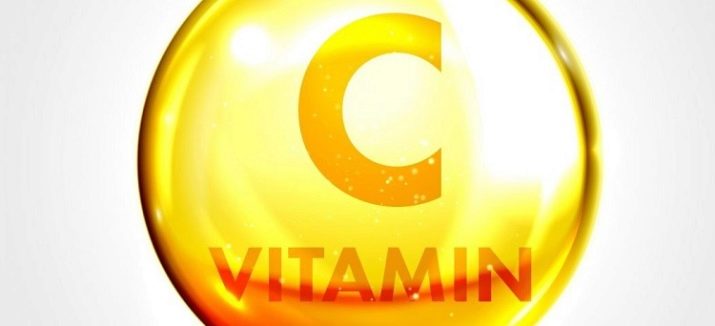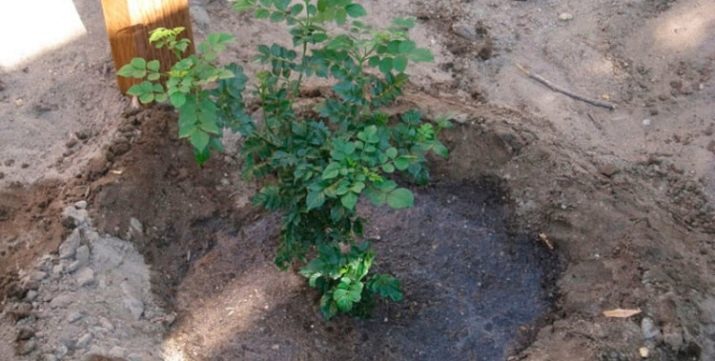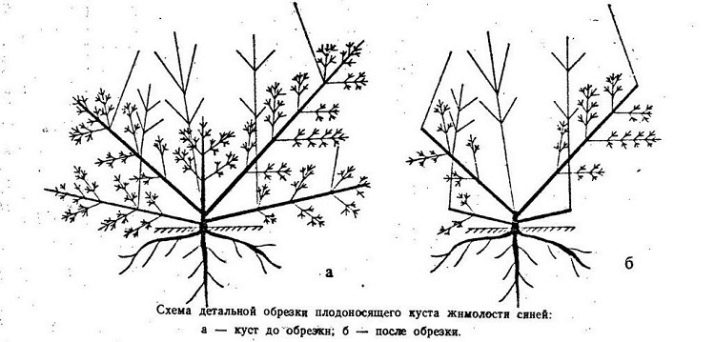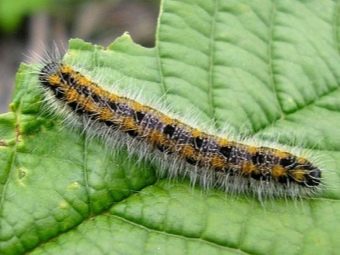Violet honeysuckle: variety description and cultivation
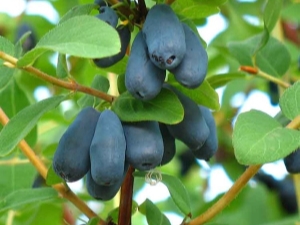
Violet honeysuckle variety was bred in St. Petersburg through pollination using the free method of another plant species.At first, the variety grew only in the North-West, and then it was successfully distributed throughout all regions of the country and today gardeners are pleased with their excellent yield.
Description
To grow this variety is recommended in areas with a stable climate. The height of the bushes reaches a maximum of one and a half meters, the branches are not spread very much, but the crown is formed dense and round in shape.
The foliage is large, dark green color, oblong shape. Blooms inflorescences of medium size, which reach a diameter of two centimeters. The shade of flowers is pale green.
One of the advantages of the variety is large berries, the maximum weight of which reaches 1.5 grams. The long form, resembling a jug, is slightly curved, and the top is pointed. The surface has small bumps, and the skin is rather dense, but smooth. In a ripe form, the fruits become blue-violet, they form a wax coating.
The pulp of the berries has a fibrous structure, tight to the touch. It has a pleasant sweet-sour taste, if there is enough light in the area where the plant grows. Tasters give a mark of five balls to the taste of the fruit. Fruits are very useful and contain not only sugar, but also large amounts of vitamin C, as well as acids and P-substances. Berries can be eaten fresh and processed, they are well transported and retain their shape.
In some regions, the ripening process ends later. As a rule, this is the end of May - the beginning of June. Even having ripened, the fruits for a long time are kept on the branches, therefore gardeners do not rush to collect them. Already for 3 years you can get a good harvest from the bush. All berries are sown almost simultaneously, so the process of collecting takes several days.
Cold varieties are not terrible, moreover, it is resistant to diseases and the influence of pests, but some preventive treatment is still required. Unfortunately, the process of pollination is possible only when planting with other pollinating varieties, such as "Amfora", "Morena" or "Nymph", since the plant is self-productive.
Not always, but in rare cases, under certain climatic conditions, honeysuckle bushes may bloom for the second time in a year. They grow best on heavy loamy and loamy soil.
Advantages and disadvantages
Among the main advantages of culture:
- winter hardiness;
- large fruits;
- great taste;
- good productivity;
- resistance to pests and fungal infections.
Among other things, the berries contain elements that strengthen the immune system, blood vessels, have a positive effect on the intestines and even slow down the aging of cells. Among the minuses - selflessness and fruiting only three years after planting.
Landing
It is recommended to plant a plant in the ground at the beginning of autumn, in spring this process is better to be postponed, as sap flow begins. This is a perennial bush, which is very bad going through the site, so the place should be chosen immediately permanent, where the sun is present most of the day.
The soil should not be too wet, the optimum level of groundwater is one and a half meters. Try to make sure the bush is protected from drafts. Sour soil can be disastrous, but if there is no other place, then sprinkle the earth with ashes before planting. If this requirement is left out of sight, then the leaves will acquire a weak shade, and in the future low fruiting is ensured. The soil can be fertilized, edible berries should have an additional feed.
Pay special attention to the distance between the bushes. It must be at least one and a half meters, otherwise an undesirable shadow will appear, and the honeysuckle will fight for a place under the sun.
Care
There is no special care for the plant. The gardener must provide normal watering, fertilizing the soil, pruning, then he will get a good harvest.
Watering
Honeysuckle is irrigated regularly, in small portions, since it does not like too wet soil.Under each bush enough to pour a bucket of water, but every day, if the season turned out to be dry. With regular precipitation, watering is reduced significantly.
We must not forget about loosening the soil and removing weeds, because, in this way, the necessary oxygen supply to the root system is ensured. Once a year, ash is added to the water to control the acidity of the soil.
Advice to gardeners who cannot often appear on the site: after watering, cover the ground under the bush with mulch, it will remarkably retain moisture until the next visit.
Top dressing
In early spring, when the last snow has already gone, it is necessary to add a dose of nitrogen to the soil. At the development stage, it will contribute to the appearance of a good green mass. Great for this urea. A little later, at the end of spring, you can fertilize with humus or manure. In the fall, superphosphate or compost is used as top dressing.
In the first year of growth, it is sufficient to simply put in the planting pit of humus, fertilizers are applied on a regular basis only for the third and subsequent years.
Pruning
Such sanitization should take place at the beginning of autumn, when sap flow is already slowing down. Branches that are damaged, dried, aged, cleaned. Those that began to grow inside the crown, too, are not needed by the plant, they only burden it. In no case it is impossible to shorten the seedlings, otherwise the ripening of the fruits will be much later.
The first years to touch the bush is not necessary, molding begins in the sixth year. Then rejuvenation of shoots is required only once in two years. There should be about five main branches. The upper ones do not touch, because it is on them that the flower ovaries are formed.
On average, honeysuckle can grow up to twenty years, then make rejuvenation and carry out a cardinal pruning.
Preparing for the winter
Honeysuckle perfectly tolerates even severe frosts, so there is no need for shelter. The foliage under the plant is removed, because it pests overwinter in it. It is not interesting to rodents, but birds can encroach on buds, therefore some gardeners cover bushes with a grid.
Pests
The main problem for the gardener can be:
- caterpillars;
- aphid;
- moths;
- schitovka.
Perfectly suited to combat them are such tools as Actofit, Fitoverm and Bicol. They are absolutely safe for humans because they have a biological basis.
You can carry out prevention, treating bushes "Decis" or "Confidor".
Reviews
In general, the responses of gardeners about honeysuckle of this type are only positive, because the plant does not cause much trouble and does not require constant attention, but it brings a good harvest. Summer residents speak well of the taste qualities of honeysuckle, which can not only be fresh, but also make a variety of preparations.
Among the negative responses, only the need to purchase pollinators for this type of honeysuckle can be noted.
In the next video you will find a brief overview of the honeysuckle variety "Violet".


